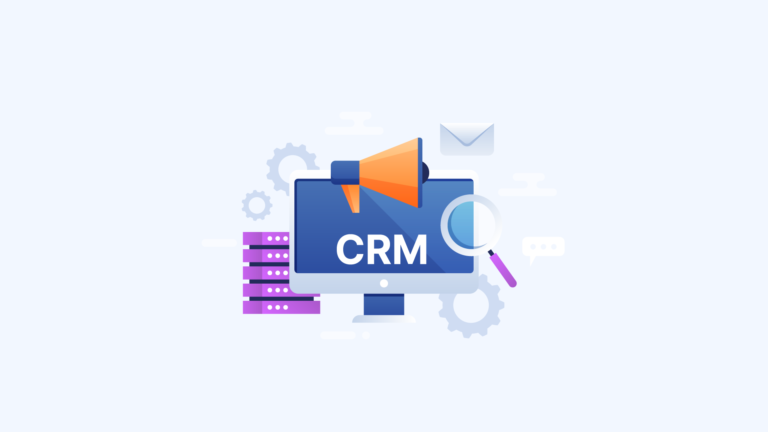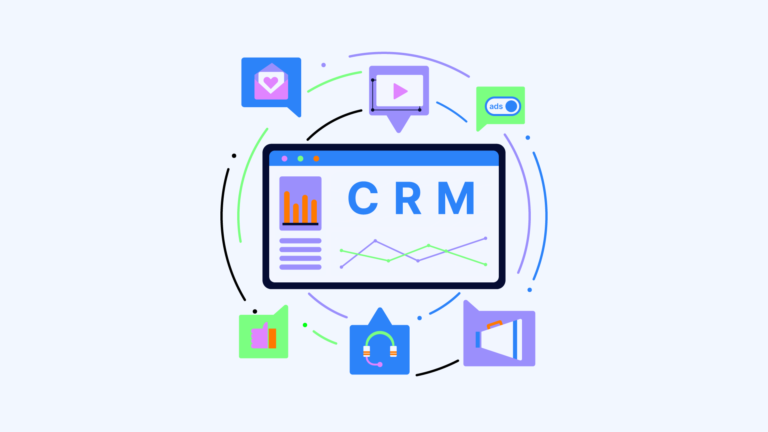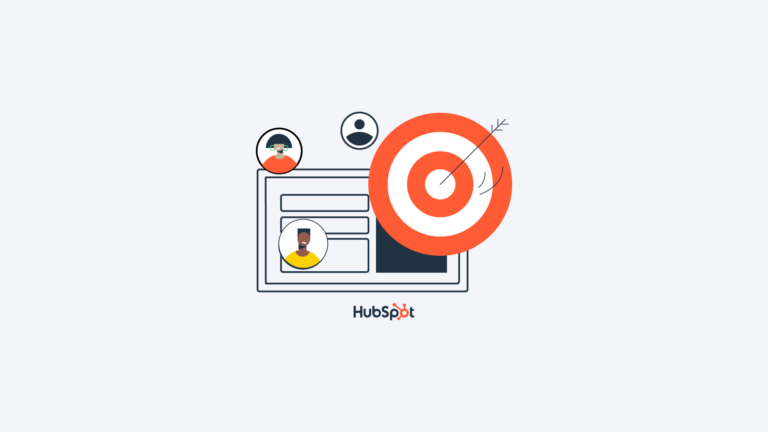|
Getting your Trinity Audio player ready...
|
Your CRM system may be the most important piece of business technology in your company because it allows you to manage all your interactions with your customers.
Customer success-oriented companies need to be extra careful when they’re hiring new employees.
A good CRM system should provide you with a complete view of your customers’ interactions with your brand. This includes everything from emails sent to phone calls received or just customer interactions with your brand.
You’ll want to know how many times each contact interacted with your brand, what type of communication it was, and whether or not they converted into a sale.
You’ll also want to keep track of your contacts over time. If someone signs up for your newsletter, for example, you’ll want to see where he or she ranks among your list of subscribers.
The most important thing to remember when setting up a CRM for customer success is that it needs to fit your unique workflow or business processes. Some companies use multiple systems, while others rely entirely on one. Either way, make sure yours does everything you need it to.
In this article we will look at how you can go about setting up a CRM system to the benefit of your team and your customers.
First lets look at what a CRM system is!

What is a CRM?
A Customer Relationship Management (CRM) system is a software program designed to help companies manage their interactions with current and potential clients.
In short, a CRM system allows you to track every interaction with your customers, including emails, phone calls, social media posts, etc. This way, you can see what works best for each individual client and make changes accordingly.
The most popular CRM systems are Salesforce, Zoho, HubSpot, and Pipedrive. Each offers different set of features, but they all serve the same purpose, to keep your customers happy and loyal. See our list of the best CRM software for more information.
Important CRM Terms to Know
Before jumping in on setting up your CRM, familiarize yourself with the below terms:
Contact
The difference between leads and contacts is subtle, but it makes a big impact on how we treat each one. We tend to think of leads as people we already know about, while contacts are individuals we don’t know much about. But what if we’re wrong?
In reality, there’s no clear distinction between the two. They both represent potential customers, and both require nurturing. So why do we make such a big deal out of it? Because it affects our behavior.
We tend to treat leads differently because we assume they’re less important than contacts. And since we’ve been trained to focus on leads, we often forget about the people we meet along the way. This causes us to lose touch with those prospects, and miss opportunities to nurture relationships and build trust.
So let’s take a closer look at the nuances of leads and contacts, and see how we can use them to improve our marketing efforts.
Lead
A lead is someone whose interest in what you’re offering is high enough to want to talk to you about it. They’ve expressed some level of interest in what you do, whether it’s just browsing around your site or looking into buying something.
There are three types of leads: SQL, MQL, and B2B. SQL leads are people who have already done some research into your product or service and are ready to buy now.
These are usually referred to as “qualified leads.” MQL leads are those who haven’t researched much into your product or service yet, but still, show some interest in what you offer. These are often called “warm leads,” because they’re still very close to being qualified. Finally, there are B2B leads, which are people who are actively searching for companies like yours.
The main difference between SQL and MQL leads is how many steps away from a purchase they are. An SQL lead might be willing to buy immediately, while an MQL lead might take weeks or months to decide.
In general, the closer a lead is to make a decision, the better off you’ll be. If you sell software, you don’t want to wait too long to start selling to warm leads. You could lose out on potential customers who find another solution. On the flip side, cold leads aren’t worth chasing either. You won’t make money off them unless you spend a lot of time trying to convert them.
Contacts
The difference between leads and contacts is subtle, but it makes a big impact on how we treat each one. We tend to think of leads as people we already know about, while contacts are individuals we don’t know much about. But what if we’re wrong?
In reality, there’s no clear distinction between the two. They both represent potential customers, and both require nurturing. So why do we make such a big deal out of it? Because it affects our behavior.
We tend to treat leads differently because we assume they’re less important than contacts. And since we’ve been trained to focus on leads, we often forget about the people we meet along the way. This causes us to lose touch with those prospects, and miss opportunities to nurture relationships and build trust.
So let’s take a closer look at the nuances of leads and contacts, and see how we can use them to improve our marketing efforts.
Deal
A deal is a document that keeps track of every step involved in the completion of a transaction. This includes everything from initial contact to final delivery. In some cases, it might even include things like contract negotiation and payment processing.
The purpose of a deal is to ensure that everyone involved in the process understands what’s happening and why.
In addition to being used internally, deals are often shared with external parties such as vendors, customers, partners, and employees.
Company
Companies are often associated with one person, such as a CEO or founder. This extends to every person in the company you are in contact with to have an interaction with your brand,
Deal Stage
A deal stage helps you organize all your deals in one place. You can use it to keep track of what needs to happen next in the sales process. For example, you could set up a deal stage called “Prospecting.” This deal stage might include things like identifying prospects, scheduling meetings, sending emails, etc.
Each deal stage shows you a specific step in your sales process. So, if you’re working on a lead generation campaign, you’d probably want to add a deal stage called “Lead Generation.”
You’ll find that most CRMs allow you to define multiple deal stages per opportunity. Some even offer prebuilt deal stages such as “Qualify,” “Engage,” and “Close.”
Pipeline
A pipeline organizes deals into stages. Each stage represents one step in the deal lifecycle. For example, you might have a pipeline for lead generation, another for qualifying leads, and a third for closing the sale. You could even have multiple pipelines for each stage, such as one for marketing campaigns and another for sales activities.
Deal stages are organized into pipelines. Pipelines help salespeople track which deals remain active and which ones are ready to close.
You can use a pipeline to manage multiple deals simultaneously. For example, you could set up a pipeline for a specific customer account and another for a particular product offering. Or you could create a single pipeline for all of your accounts and products.
How Do I Set up a CRM System for my Business?
To help your clients succeed, you must keep track of their contact information and lots of details about them and what they want. Your Customer Success team needs to be capable of finding it easily.
Your CS team can be more effective if they use their CRM in a manner that works best for them. There are some commonalities among teams, but there are also differences. Here are five things every team should consider when setting up a CRM System.
If you’re looking for ways to improve your customer relationship management (CRM) software, don’t overlook the following steps:
- Map out your customer journey
1. Start by mapping your customer journey
The first step in setting up a Customer Relationship Management (CRM) system is mapping out how your customers become your customers. This includes understanding where they are in the buying process, what problems they might be having, and why they are coming to you versus another vendor.
A customer journey map simply outlines how your customers become your customers. This will feed in to how you set up your CRM strategy because depending on where your business gets your customers and what route they take to buy, you can understand them much better.
To get these answers ask yourself these questions.
- How do people hear about you?
- How do you know when they are ready to buy your products?
- How do you close a sale for your business?
How do people hear about you?
Your customers have to come from somewhere, right? They must know someone who knows you. And it might take some work to find them.
But how do they learn about you? Do they just stumble across your site? Or do they go looking for you?
What’s your first impression? Is it positive or negative?
Where do your prospects spend most of their time online? Are there places where they hang out?
Identify things your customers have in common. If you can identify what they like, you can start building relationships with them.
Where are your potential customers? You don’t want to miss out on anyone. Find ways to reach them.
Create opportunities to get your business in front of them. One of the ways to make this easy is by finding out what information they need before they buy.
How do you know when people are ready to buy?
There are three stages of buying behaviors: awareness, consideration, decision.
These different phases occur over a period of time, and each phase requires a different amount of effort. During this time your job as a brand is to answer questions that will help your potential customers make a decision and help them succeed.
Some of these questions are
- When does a prospect become a lead?
- How do you measure customer engagement with your brand?
- When does marketing handoff leads to your sales team?
A good customer relationship management (CRM) system helps companies track every lead throughout the entire lifecycle, including nurturing those who are still exploring and converting those who are already considering.
What process do you follow to close deals and sell?
Close sales faster by understanding how buyers make decisions. The buyer’s journey can be broken down into four distinct steps: discovery, research, evaluation, and purchase. Each stage has its own challenges and opportunities.
Discovery is the first step in the buying process. It’s when a person learns about your company and your product.
Research is the next step. It’s where a person decides whether or not to invest more time learning about your company and your offering.
Evaluation is the third step. This is where a person makes a decision about whether or not to buy.
Purchase is the final step. Here, a person buys your product or service. Each step is important because if you skip any one of them, you could lose a deal. To close a deal, you need to understand how buyers make decisions at each stage of the buying cycle.
You also need to be able to provide value at each stage so that buyers feel comfortable enough to move forward.
If you can do all of this, then you will be able to build long-term relationships with your customers.
This means that you will have a steady stream of new customers coming back to you. In addition, you will be able to nurture existing customers and keep them happy. In order to create a successful sales funnel, you must understand the needs of your target audience.
What problems do they face? What pain points do they experience? Once you know this, it’s easier to find solutions to their problems. For example, if you run a gym, you might ask yourself what people want from a fitness center.
Do they want to get fit? Or, do they want to socialize? Do they want to work out alone? Or do they just want to relax and unwind?
Once you know what your prospects want, you can design a solution that meets their needs. For example, if they want to work out alone, you can offer free weights and cardio equipment.
2. Define your business and sales processes
The first step in creating a successful CRM strategy is defining your business and sales processes. This process involves identifying what you want to accomplish and how you plan to do it. By doing this, you are setting yourself up for success.
Once you have those processes set out, you will be able to find out who needs to take action, and when. You can even automate some of the steps to make things easier.
Your marketing team should define the customer journey before starting any campaign because once you know where the handoff happens, you can start there.
Make sure your sales team knows what to say and when to say it. They should understand the entire buying cycle, including the different stages of the funnel. If they don’t, they won’t be able to close deals.
Don’t let your sales opportunities fall through the cracks.
3. Set up and create custom fields, deal stages, and sales pipelines
Custom Fields are a way to save and display information about contacts. They’re useful for storing additional information like phone numbers, email addresses, etc., and displaying it on a profile or lead record.
A pipeline organizes a series of steps within an organization’s sales cycle. For example, a customer might start out buying products online, then move into a demo call, and finally make a purchase. Each step along the way could use a different set of custom fields.
Make sure you know what each stage needs before adding new ones. If there’s no reason why a particular field is needed, don’t add it. You’ll just end up wasting space and confusing yourself later.
Don’t overcomplicate things. Customers want simple solutions. If you’ve got too many options, customers won’t choose one.
Customer data should always be updated. When someone changes something about themselves, update their data. This helps keep everything consistent across your CRM system.
4. Enter/Migrate your customer information from old system
Migrating customer information is important because you are loading your existing customer contacts into your new CRM.
The next step in building a successful relationship management system (CRM), is mapping out your custom fields. This is where you’re going to start collecting all the data about your customers that you want to keep track of.
You might already know what some of these are, such as name, address, phone number, email address, etc., but there are likely many others that you haven’t thought about. These could include things like annual income, favorite color, hobbies, and even how much money they spend shopping online each month.
Once you’ve mapped out your custom fields, make sure to add them to the appropriate sections of your CRM. For example, if you sell products, you’d probably want to add product names, prices, descriptions, images, and maybe even special offers.
If you sell services, you’d probably want contact info, pricing, availability, and maybe even testimonials. And don’t forget to add notes about why you chose those particular fields.
If you’re still having trouble deciding which fields to collect, consider asking your customers directly. They’ll tell you exactly what they want to know, and you’ll save yourself a lot of time and effort later.
5. Make communication easy
Your customer relationship management (CRM) system should act as the central place where you store information about your customers.
This includes everything from basic contact data like name, address, email, phone number, etc., to more detailed information such as what products and services are most important to each individual customer.
You want to make it easy for your salespeople to access this information whenever they need it. The same goes for your internal team members. They should be able to easily find out who needs what product or service and how much inventory is left.
If there is no way for them to do that, they might start looking for another job.
In addition to making communication easier, your CRM should integrate well with your preferred chat apps. Chatting via text messages, Facebook Messenger, WhatsApp, Slack, Skype, Telegram, Kik, Viber, WeChat, Line, Hangouts, and others allows you to communicate quickly and efficiently with your customers.
You don’t necessarily need to use every single one of those platforms, but having some sort of integration makes things go smoother. For example, if you’re using HubSpot you get some features included with your CRM like Live Chat, which you can integrate with your website and social media accounts.
6. Track interactions and information
A common complaint among customers is having to repeat themselves multiple times to customer support reps. This happens because there are often several different ways to solve a problem.
For example, a customer might say something along the lines of “I want to add a product to my cart.” But what does that mean? Does he want to buy one item or many items? Is he looking to purchase a single product or a bundle? What if he wants to make changes to his cart?
A CRM should track all conversations between customers and employees. A CRM can store details about each conversation, including what happened, whom it involved, and why. This helps create a better overall customer experience.
Rep notes are great tools for building relationships with customers, especially when you want to keep those relationships strong.
In addition to tracking how customers interact with your products and services, you should also track information such as the date and time of each interaction.
You’ll know exactly where the conversation took place and whether it was resolved quickly or dragged out. This helps you identify areas of improvement, and it allows you to see trends over time.
7. Set up team notifications
Customer Success Managers (CSMs) spend much of their time building relationships with customers. They do this by proactively reaching out to customers via email, phone calls, social media posts, etc., and following up on conversations that take place over the course of months or even years. This type of relationship-building requires time, patience, and persistence.
Here are some examples of actions that benefit greatly from good timing:
- Proactive outreach from CSMs – Many companies use automated tools to send emails to customers and prospects. These types of messages often go unanswered because people aren’t expecting them. However, proactive outreach from CSMs on regular schedules benefits both parties. For example, a CSM could send an email to every customer once per month asking about their experience with the product. If you’re able to catch someone while they’re still thinking about their experience, it gives you a chance to build rapport and make sure they know what’s coming next.
- Checking in after a problem was resolved – When you resolve a customer issue, it’s important to check in with them periodically to see how things are going. You don’t want to wait too long to follow up, though; otherwise, the customer might forget about the issue entirely.
- Reaching out to customers who haven’t responded – It’s easy to assume that everyone has received your message, but sometimes people miss them. In these cases, it’s best to reach out again and ask if they’ve gotten your message.
The key here is to be aware of when customers have been inactive and respond accordingly.
Set up notifications in your CRMS to keep track of important activity. For example, you could set up email alerts whenever a customer opens a case, makes a purchase, sends a request for a proposal, etc. You can even use Zapier to automate the process of sending notifications.
8. Integrate your other software tools and automate manual processes
There are different ways to integrate your CRM with other tools. You can use third-party apps, custom APIs, or even build your own. Depending on what you want to do, there are many different options available.
Here are some integrations to consider:
- Native integrations – Native integrations let you connect your CRM directly to other applications. This gives you full control over how your data flows, and it makes it easier to customize your workflow. For example, you could set up a rule that automatically creates a task in your CRM whenever someone sends a lead via email.
- Third-Party Apps – If you don’t want to write code, you can find plenty of readymade solutions out there. Some popular ones include Zoho, HubSpot, Marketo, and Pipedrive. These apps offer prebuilt connectors that make it easy to pull information into your CRM.
- Custom APIs – A custom API lets you programmatically interact with your CRM. This gives you complete flexibility over how your data moves around. You can easily add features like sending emails, creating reports, or managing leads without writing any code.
- Automation Software – Zapier is one of the most popular automation platforms. With Zapier, you can connect almost anything together. For example, you can send an email every time a contact submits a quote request. Or you can automatically update contacts’ statuses based on whether they’ve been assigned to a project.
The best way to figure out which option works best for you depends on your needs. Do you want to keep everything centralized? Are you looking for something simple? How much customization do you need?
How you can save more time by integrating your CRM?
The CRM industry is booming. In fact, according to Forrester Research, it grew by over $1 billion in 2018 alone.
And while there are many different types of CRMs out there, most fall under one of three categories: Customer Relationship Management (CRM), Marketing Automation (MA), and Salesforce.com.
If you’re looking to save time and money, you’ll want to integrate your CRM with your MA and/or sales software.
Here’s how.
Automate the Flow of Data to Your CRM
If you’ve ever tried to manually enter information into your CRM, you know what I’m talking about. You spend hours entering leads, contacts, opportunities and accounts into your system. Then, you spend another few hours updating those same records once they’ve changed.
This process takes way too much time and energy. So why do it yourself? Why not automate the entire process?
With the help of Zapier, you can connect your CRM to your email marketing platform, social media management tool, and more.
Once you set up the connection, you can automatically send new leads, contacts, and accounts to your CRM whenever something changes in your email inbox, Facebook, Twitter, LinkedIn, Instagram, etc.
Save time by automating manual tasks
There are plenty of things you can’t automate, like sending personalized emails to each customer. But there are some things you can automate, such as creating and editing reports.
With the help of tools like MailChimp, Infusionsoft, Marketo, HubSpot, and others, you can easily create custom reports based on your data. These reports can include everything from simple lists to complex dashboards.
Use Automation to increase productivity
You might think that automating manual tasks will only increase your workload. After all, if you have to do less work, doesn’t that mean you won’t be able to get more done?
The truth is, automation actually increases productivity because it frees up your time so you can focus on other important projects. Plus, when you use automation, you can scale your business quickly.
For example, let’s say you run a small business and you want to start using a CRM. It could take weeks or months before you find the right solution.
However, with automation, you can start saving time immediately. By connecting your CRM to your marketing automation tool, you can automatically add new leads, contacts, customers, and accounts to your database.
Once you’ve integrated your CRM with your marketing automation tool, it’s easy to update your pipeline.
Every time someone signs up for your newsletter buys a product or fills out a form, you can automatically send them an email. Or, if you prefer, you can use automation to schedule follow-up calls or meetings.
9. Add your team and set permissions
Open your CRM up to the people you work with. You’ll want to add your entire team by email address so they don’t have to go through multiple screens just to log into the system.
Then, set up user permissions to give them access to certain parts of the system based on their roles. For example, marketers might need access to email automation templates and subscriptions, while salespeople could use it to manage their pipeline.
Don’t give everyone all too many permissions as this may mess up your data storage. Team leaders should be able to make major changes that may affect their departments and communicate with their respective teams to ensure everyone is on the same page.
Now! Set your CRM Up for Success
Alright, that concludes our guide to setting up your CRM, we hope you will use any CRM of your choice to create better customer experiences. Though it may look like a difficult task to set up a CRM system, once you are in you will have the best time using it and keeping up with your customer’s needs.






